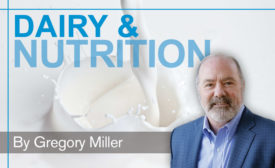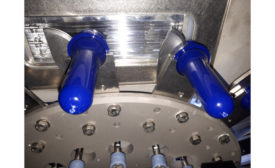Home » Publications » Dairy Foods eMagazine
Dairy Foods eMagazine
.png?t=1639497086&width=400)
2021 December
Cover Story
Back to TopOur Processor of the Year is a standout not only in new product development, but also in social and environmental responsibility.
Read More
Foods & Beverages
Back to TopA slowdown in growth for retail cheese
Sales of natural cheese flattened, while processed cheese lost ground.
November 15, 2021
Processors
Back to TopSelecting a spray device for clean-in-place equipment
Fixed spray devices, single-axis rotary sprays and multi-axis rotary sprays all offer certain advantages, disadvantages.
December 7, 2021
Dairy to hit the reset button for 2022
Our industry has shown itself to be resilient during the pandemic, and we are working with our dairy industry leaders to position dairy for the future.
December 1, 2021
Regulations update, other actions would address supply chain disruptions
Recently introduced bipartisan legislation and a new IDFA task force aim to address myriad supply chain issues in the dairy industry and beyond.
November 30, 2021
U.S. dairy helps fight food insecurity
Through its commitment to providing milk for school lunches, food banks and more, the industry is helping to end hunger.
November 29, 2021
Enhance nutrition in cultured dairy products
Vitamins, minerals and prebiotics spell opportunity.
November 22, 2021
FDA’s sodium-reduction guidance targets cheese
More reductions are likely to come.
November 19, 2021
Immune support needs spell opportunity for healthy dairy snacks
FDA announces plan to update definition of healthy and add symbol.
November 17, 2021
Ingredients
Back to TopProbiotics, prebiotics are natural partners for dairy
These ingredients can attract today’s health-concerned shoppers.
December 6, 2021
Operations
Back to TopInaugural DairyTech Conference will connect dairy industry leaders with technology innovators
The event will take place May 18-20, 2022, in Austin, Texas.
December 8, 2021
The dairy packaging sector feels the heat
Aseptic and retort packaging are becoming more popular and potent forces in the war against pathogens.
December 3, 2021
Stay ahead of the curve. Unlock a dose of cutting-edge insights.
Receive our premium content directly to your inbox.
SIGN-UP TODAYCopyright ©2025. All Rights Reserved BNP Media.
Design, CMS, Hosting & Web Development :: ePublishing














.jpg?height=168&t=1639062115&width=275)


